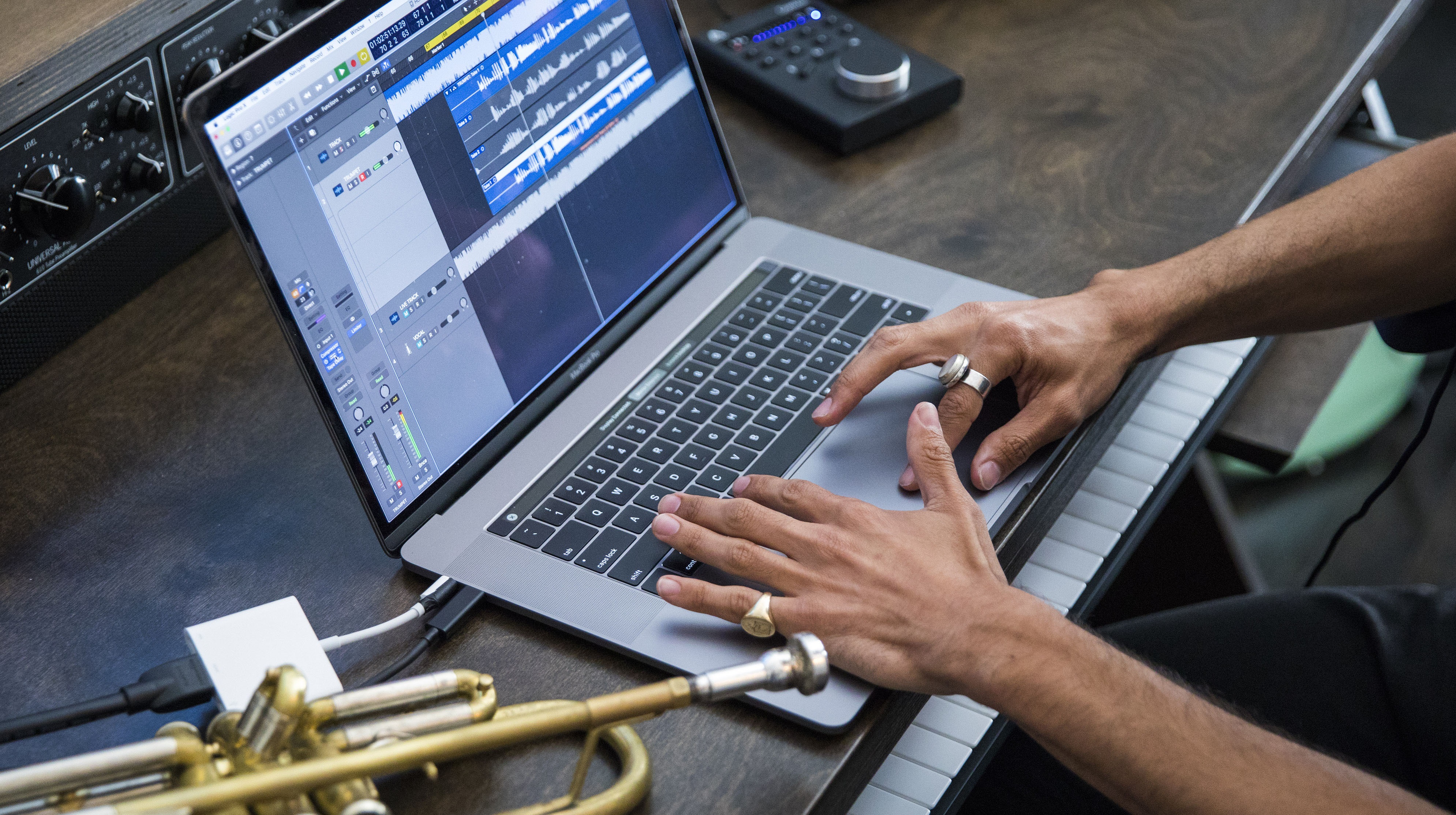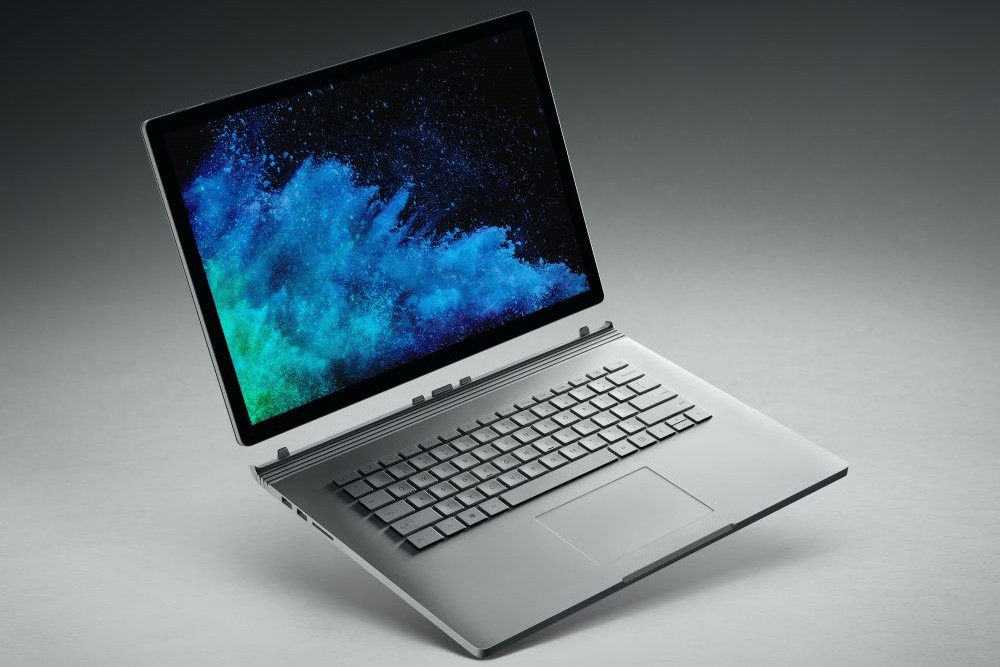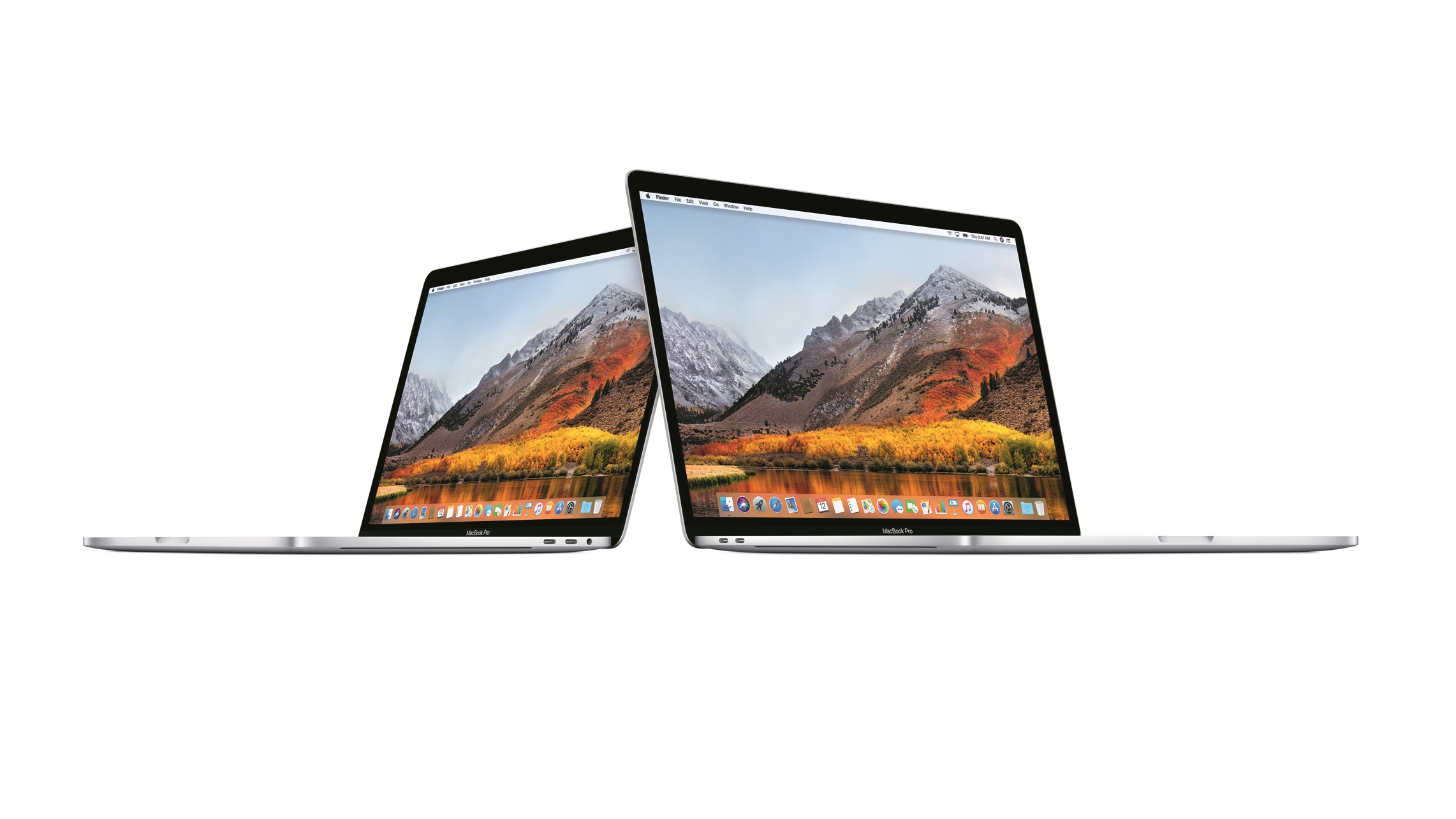MacBook Pro 2018 vs Surface Book 2: the most premium pro laptops compared
Which is the better pro laptop for you?

With Apple’s newest MacBook Pro laptops now up for sale, it’s time to see how these new devices stack up against Microsoft’s Surface Book 2 line, perhaps their closest competitors. Both companies have developed very different ideas of what a pro laptop should be, but are nevertheless in a battle for the same crowd.
The MacBook Pros of 2018 may have the advantage now when it comes to pure power, having been released long after Microsoft’s latest laptops, and addressing nearly every disgruntled fan’s concern. However, the Surface Book 2 remains a more complete package for the creative, with a tablet baked into the product, although it is less powerful in most areas.
Which laptop should you buy? That’s become a much more difficult question with these new MacBook Pro models.

First bout: the 15-inch models
Design. Both Apple and Microsoft are the absolute top of their game when it comes to laptop hardware design these days, with the former having the luxury of tweaking its successful formula, while the latter is on a sharp upward curve, having been in the game for far fewer years. Regardless, there are stark similarities and differences alike in both firms’ approach to the pro laptop.
Apple and Microsoft both have built their laptops out of unibody aluminum frames with chrome logos on their screen lids, which is now something of a trend across the market. Both the MacBook Pro and Surface Book 2 also feature excellent keyboards and touchpads, with the MacBook Pro ushering in the third generation of Apple’s butterfly hinge keyboard, which is designed to be quieter than before. The Force Touch trackpad returns as well, adding a bit more depth to interacting with macOS.
The Surface Book 2 uses Microsoft’s Precision Touchpad, which the company also licenses out to countless premium laptop makers, and is just as accurate as on other Windows 10 laptops.
Of course, Apple and Microsoft have very different ideas of what the professional laptop looks like and how it works, with Apple staunchly focused on the traditional form factor, while Microsoft is pushing the trend of hybrid devices. However, the Surface Book 2 doesn’t lose too much in the transition to a 2-in-1 laptop in terms of power and capability. In fact, it gains a serious battery life boost, a detachable touchscreen with Surface Pen and Surface Dial support, and an SD card slot.
Get daily insight, inspiration and deals in your inbox
Sign up for breaking news, reviews, opinion, top tech deals, and more.
The MacBook Pro dips a toe into the 2-in-1 waters with the Touch Bar, but it’s a pinky toe at best. Instead, this laser focus on traditional design (and its release timing) has allowed Apple to focus on pure power – to a point.
Likewise, this focus results in a streamlined machine that’s both thinner and lighter than the Surface Book 2 in both size configurations.

Display. Apple has been rightly praised for its computer, phone and laptop displays with its Retina and now True Tone technology, but Microsoft has largely closed the gap in recent years with its PixelSense displays that are focused on resolution, color and touch response.
The 15.4-inch MacBook Pro display remains largely unchanged from years prior in terms of resolution (2,880 x 1,800; 220 ppi) and size, save for the True Tone technology that
debuted on the iPad Pro. This changes the color tone of the screen to match the ambient lighting, which is said to help users focus on what’s being display on the screen, while helping to reduce blue light exposure.
Microsoft’s 15-inch PixelSense screen beats the MacBook Pro in terms of pure pixel density at 260 pixels per inch (ppi) with a 3,240 x 2,160 resolution. However, the MacBook Pro display sports a wider, true P3 color gamut than the Surface Book 2’s sRGB screen with some P3-D65 elements. Both displays are rated for 500 nits of brightness.
Of course, which display wins out here isn’t quite apples to apples. The MacBook Pro screen supports wider color profiles and adaptive tone technology where the Surface Book 2 is sharper and is detachable with touch support. Which screen you go with entirely depends on your needs as a creator professional or otherwise.

Performance and price. The new MacBook Pro’s pricing remains unchanged from last year while bringing to bear all sorts of component improvements.That means the 15-incher begins at $2,399 (£2,349, AU$3,499).
That starting price gets you a 2.2GHz, hexa-core Intel Core i7 processor upgradeable to a 2.9GHz, hexa-core Intel Core i9 chip – both from the Coffee Lake 8th generation. For storage, it has 256GB of SSD space configurable up to 4TB, and the 16GB of DDR4 RAM to start can at last go up to 32GB.
As for graphics, you’re getting an AMD Radeon Pro 555X upgradeable to a 560X model, both of which come with 4GB of video memory. Finally, the offering of four Thunderbolt 3 ports remains unchanged, not to mention the 10 hours of claimed battery life.
The Surface Book 2, on the other hand, starts at $2,499 (£2,349, AU$3,649). That’s another hundred bucks for a slower 1.9GHz, quad-core Intel Core i7 processor (8th-generation Kaby Lake) and Nvidia GTX 1060 graphics with more video memory at 6GB GDDR5. The memory on offer is 16GB DDR3 to start, backed by 256GB of SSD space. Here, only the storage is further upgradeable – up to 1TB.
Thunderbolt 3 is also missing entirely on the Surface Book 2, though it offers up an SD card slot where the MacBook Pro still doesn’t. Microsoft’s laptop also doubles as a tablet, and therefore dwarfs Apple’s with two batteries driving up to 17 hours of use, by Microsoft’s claim, while offering unique features the MacBook Pro simply doesn’t have.
On paper, the MacBook Pro clearly beats the Surface Book 2 in several key areas, namely more processor power, faster (and more) memory and higher SSD capacity as well as Thunderbolt 3 connectivity speeds. However, the Surface Book 2 has arguably stronger graphics with 6GB of video memory and far longer battery life when in laptop orientation.

Second bout: the 13-inch models
Display. Because of the extreme similarities in design between these two models and their 15-inch counterparts, let’s jump right into comparing the screens. The 13-inch MacBook Pro remains unchanged in its resolution and size, so 2,560 x 1,600 at 227 ppi compared to the 13.5-inch Surface Book 2’s display resolution of 3,000 x 2,000 at 267 ppi.
Right off the bat, the Surface Book 2’s display is both larger and sharper than the 13-inch MacBook Pro, not to mention that it’s a detachable touchscreen with Surface Pen stylus support. However, the 13-inch MacBook Pro also includes Apple’s new True Tone display technology and the wider P3 color gamut.
At that point, and with both displays rated for 500 nits of brightness, your decision comes down to your priorities. Will you go for more sharpness, size and versatility with the Surface Book 2, or will the stronger color reproduction and adaptive tone tech in a smaller, more pixel-light display tempt you into buying the MacBook Pro 2018?

Performance and price. Just like the 15-inch model, the 13-inch model’s price remains unaltered, sitting at $1,799 (£1,749, AU$2,699) to start. This nets you a 2.3GHz, quad-core Intel Core i5 processor upgradeable to a 2.7GHz, quad-core Intel Core i7 chip – both being 8th-generation Kaby Lake parts.
This is backed up by 256GB of SSD space to start, which can also be boosted to up to 1TB of storage. Memory on this model remains at 8GB of DDR3 RAM to start, which can be doubled to 16GB. As for graphics, the MacBook Pro comes with integrated Intel Iris Plus 655 on the processor – there are no discrete graphics options for this model. Meanwhile, the four Thunderbolt 3 ports return, as does the claim of 10 hours of battery life.
The 13.5-inch Surface Book 2, on the other hand, comes with a dual-core, 7th-generation Kaby Lake Intel Core i5 processor upgradeable to the same chip inside the 15-inch model at just $1,199 (£1,149, AU$2,199). This laptop matches the MacBook Pro with 8GB of DDR3 memory that can be doubled to 16GB, but starts with just 128GB of storage upgradeable to 256GB.
This all makes the 13.5-inch Surface Book 2 look rather poor in comparison at the entry level. However, when configured with the Core i7 processor, the tables turn a bit in Microsoft’s favor, as for $1,999 the laptop gains that far beefier chip along with Nvidia GTX 1050 graphics with 2GB of video memory. Sadly, it still can’t be equipped with more storage at that price, and it includes just 8GB of memory, though the 13-inch MacBook doesn’t get 16GB of RAM either at its $1,999 (£1,949, AU$2,999) configuration.
The exact same differences that separate the two 15-inch models come to bear in these two smaller laptops. The MacBook Pro offers more raw power in some areas, like the processors, but falls short of the Surface Book 2 when it comes to graphics brunt and battery life, which Microsoft claims goes up to 17 hours to the MacBook Pro’s 10.

Takeaway
It’s obvious that the 2018 MacBook Pro has the advantage currently over the Surface Book 2 – more so regarding the 15-inch models – thanks to its release timing, at least when it comes to raw power, and only in some areas. By focusing on its existing design, and directly addressing feedback, Apple has catapulted the MacBook Pro to the current generation of computing components.
This leaves the Surface Book 2 looking a little longer in the tooth, but there’s still plenty of time left this year for Microsoft to respond. Even still, the Surface Book 2 remains king when it comes to battery life and graphics power, not to mention offering far more versatility than the MacBook Pro.
Right now, there are very clear lines drawn between these two laptops in terms of what they offer and what they don’t, which should drive your buying decision. However, this game could flip entirely in a few months if we’re lucky enough to see a Surface Book 3 in 2018.
- These are the best laptops of the past year
Joe Osborne is the Senior Technology Editor at Insider Inc. His role is to leads the technology coverage team for the Business Insider Shopping team, facilitating expert reviews, comprehensive buying guides, snap deals news and more. Previously, Joe was TechRadar's US computing editor, leading reviews of everything from gaming PCs to internal components and accessories. In his spare time, Joe is a renowned Dungeons and Dragons dungeon master – and arguably the nicest man in tech.
